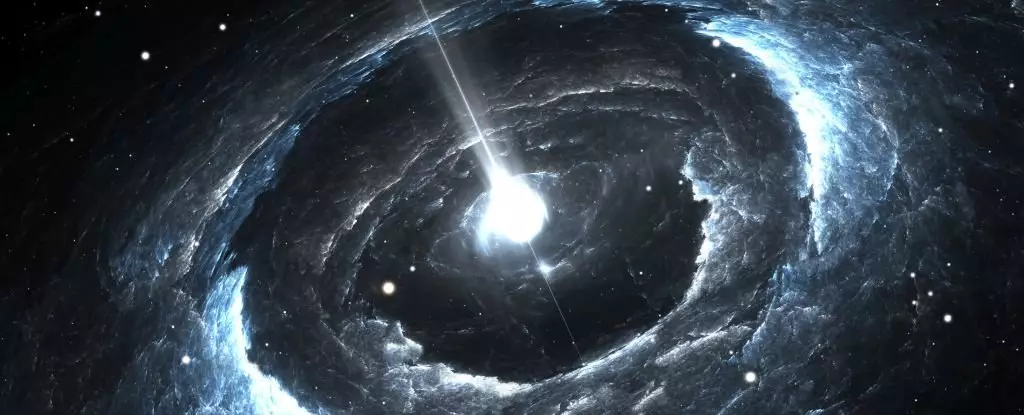Fast radio bursts (FRBs) have long captivated astronomers with their intense bursts of radio waves and mysterious origins. In a groundbreaking development, an international team of researchers has traced the source of the most powerful and furthest-traveling FRB ever detected to a tightly-knitted group of seven galaxies. Through detailed analysis and imagery from the Hubble Space Telescope, scientists are gaining valuable insights into the diverse environments that give rise to these enigmatic emissions of light.
The FRB, known as FRB 20220610A, originates within the galactic cluster itself, challenging existing theories about the workings of the Universe. The involvement of multiple galaxies within close proximity in generating the burst hints at the intricate interactions that shape the phenomenon. Astronomer Alexa Gordon from Northwestern University marvels at the significance of Hubble’s imaging, stating, “Without the Hubble’s imaging, it would still remain a mystery as to whether this FRB originated from one monolithic galaxy or from some type of interacting system.” By unraveling the uncommon conditions in these environments, astrophysicists are propelled towards a deeper understanding of the mystery behind FRBs.
To grasp the immense distance traversed by FRB 20220610A, we must consider the vast expanse of time that separates us from its source. With the current age of the Universe estimated at 13.8 billion years, this FRB hails from a point when the cosmos was a mere 5 billion years old. Initial observations indicated the presence of a shapeless mass near the origin of the FRB, leading researchers to speculate about multiple galaxies involved. The revelation that there are seven galaxies packed closely together within this space is surprising. Astounding in its implications, this proximity suggests that these galaxies interact with each other in intricate ways. The rapid succession of star formation within such an environment may offer an explanation for the formidable strength of the FRB.
The group of galaxies associated with FRB 20220610A belongs to the category of compact groups, which are remarkably rare environments in the vast expanse of the Universe. These galaxy-scale structures possess an exceptionally high density, further amplifying the complexity and uniqueness of the phenomena observed. The exceptional nature of these clusters stimulates scientific curiosity and underscores their potential significance in unraveling the enigma of FRBs. Astrophysicist Wen-fai Fong, also from Northwestern University, suggests, “There are some signs that the group members are interacting. In other words, they could be trading materials or possibly on a path to merging.”
The enigmatic nature of FRBs and the constant surprises they unveil continue to capture the attention of scientists worldwide. The intricate changes in these cosmic signals and the unsolved questions surrounding their origins fuel the desire to delve deeper into their mysteries. Current hypotheses suggest that FRBs emanate from cosmic entities like neutron stars or black holes. As our technology and telescopes advance, offering higher and finer resolutions to observe the cosmos, we are poised to uncover more answers about these elusive signals. By amassing a larger sample of distant FRBs, scientists can explore their evolution, study host properties, and potentially uncover additional peculiar populations. Dong, a researcher involved in the study, highlights the importance of such advancements, stating, “With a larger sample of distant FRBs, we can begin to study the evolution of FRBs and their host properties by connecting them to more nearby ones and perhaps even start to identify more strange populations.”
The breakthrough discovery of the origin of FRB 20220610A within a cluster of seven tightly-packed galaxies ignites new possibilities in understanding the elusive nature of fast radio bursts. Through meticulous analysis and the aid of the Hubble Space Telescope, scientists have gained valuable insights into the complex interactions within these environments. The extraordinary distances traveled by FRBs and their enigmatic qualities continue to captivate researchers, kindling curiosity and driving advancements in technology. As our telescopes continue to push the boundaries of observation, unlocking the secrets of FRBs and their mysterious origins may one day illuminate the darkest corners of the Universe.


Leave a Reply